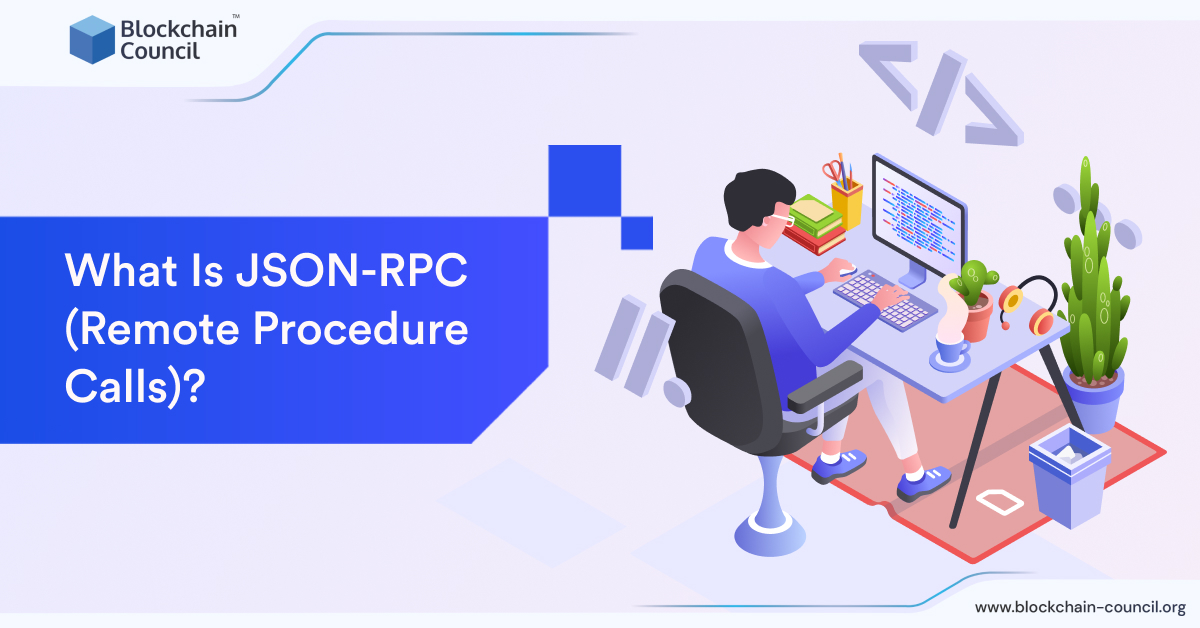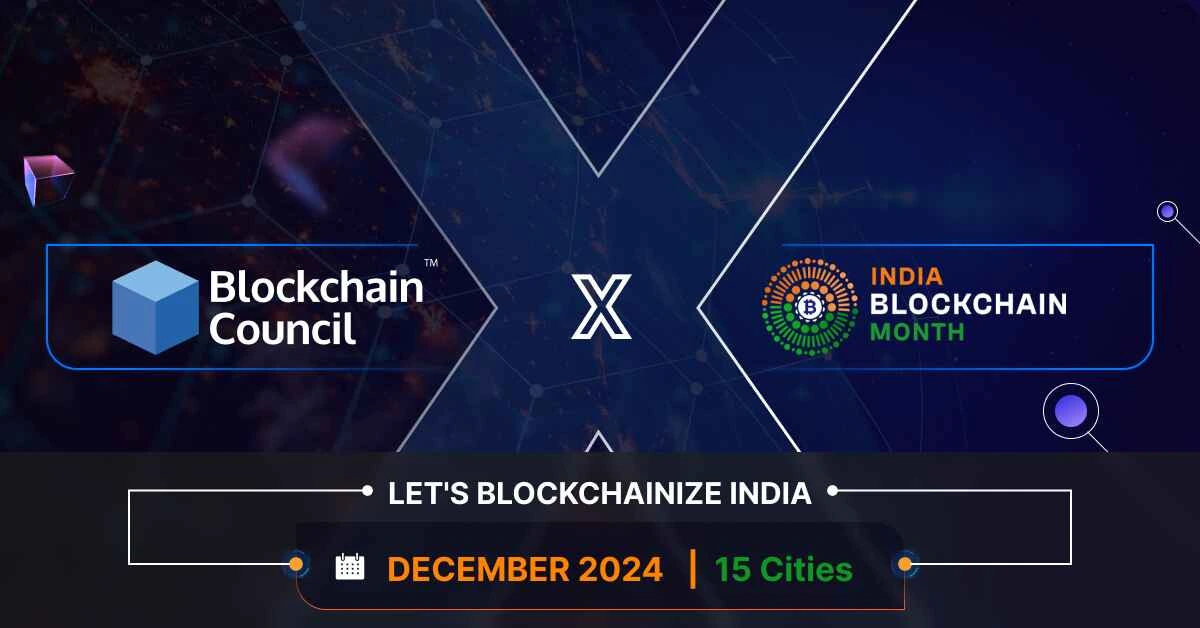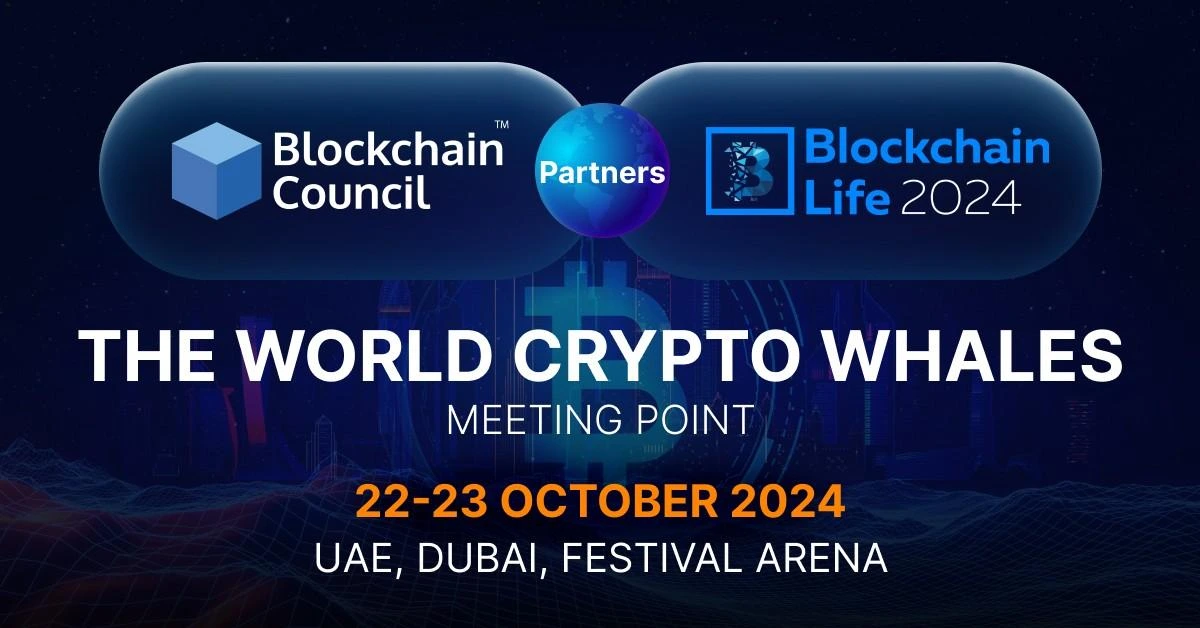
Blockchain Council Partners with Consensus Hong Kong 2025
Blockchain Council is excited to join Consensus Hong Kong 2025 as a Community Partner. This event is one of the biggest gatherings for Blockchain, digital
Home » Understanding Blockchain » What Is JSON-RPC (Remote Procedure Calls)?

One of the key components of Blockchain networks and data transfer on a Blockchain network is the interaction between wallet applications and full nodes. Wallet applications allow users to interact with the cryptocurrency network, manage their funds, and send and receive transactions. Meanwhile, full nodes are the backbone of the network. These nodes are responsible for maintaining a complete copy of the Blockchain and validating transactions.
A standardized protocol is needed to facilitate communication between wallet applications and full nodes. JSON-RPC is a protocol for transmitting data between applications in a standardized format. It is widely used in ethereum Blockchain-based networks and products like cryptocurrency for communication between wallet applications and full nodes.
JSON-RPC is a lightweight and flexible protocol for data exchange between a client and a server. It uses JavaScript Object Notation (JSON) to encode data and messages, making it easy for humans and computers to read and understand. The basic idea behind JSON-RPC is that a client can send a request to a server, and the server can respond with a response.
In cryptocurrency, JSON-RPC enables wallet applications to request information from a full node and execute actions, such as sending transactions. For example, a wallet application can use JSON-RPC to request a specific address’s current balance or broadcast a trade to the network.
JSON-RPC is a simple protocol widely adopted in the cryptocurrency industry. It is supported by many popular cryptocurrencies, including Bitcoin and Ethereum, and various wallet applications and services use it.
Also Read- Web3.js Vs Ethers.js : Know the Key Differences
In Blockchain technology, JSON-RPC facilitates communication between Blockchain nodes and client applications, such as wallets or dApps. JSON-RPC enables the client application to send requests to the node to perform certain actions, such as sending a transaction or retrieving information about the Blockchain. The node processes the request and returns a response with the requested information or a result of the action taken.
JSON-RPC is used to communicate with the node through a Web3 provider, a software component that exposes a JSON-RPC API to the client application. The Web3 provider connects the client application to the node and enables the client to send JSON-RPC requests to the node through the Web3 API.
The format of a JSON-RPC request in Blockchain technology is similar to the general format of a JSON-RPC request, with some additional properties specific to the Blockchain domain. For example, a JSON-RPC request to send a transaction might include the following properties:
The node receives the request and processes it by executing the corresponding method, in this case, “eth_sendTransaction”. The node validates the transaction and, if it is valid, adds it to the Blockchain. The node then returns a response with the transaction hash and other relevant information.
Similarly, a JSON-RPC request to retrieve information about a block might include the following properties:
The node receives the request and processes it by executing the corresponding method, in this case, “eth_getBlockByNumber.” The node retrieves the block with the specified number and returns a response with the block data, such as the hash, timestamp, and transactions included in the block.
JSON-RPC in Blockchain technology is typically used over HTTP or WebSocket transport protocols. It also supports batch requests, which enable clients to send multiple requests in a single message to improve efficiency. Overall, JSON-RPC is a crucial component of Blockchain technology that allows clients to interact with Blockchain nodes and perform various actions on the Blockchain.
Also Read- What Is An RPC Node – A Comprehensive Guide
Implementing JSON-RPC in a Blockchain involves setting up a JSON-RPC server on the Blockchain node and exposing the JSON-RPC API to clients through a Web3 provider. Here is a technical explanation of how to implement JSON-RPC in a Blockchain:
The first step is to set up a JSON-RPC server on the Blockchain node. This involves configuring the node to accept incoming JSON-RPC requests over HTTP or WebSocket, depending on the preferred transport protocol.
The next step is to define the JSON-RPC methods that the node will support. This involves implementing the corresponding functionality in the Blockchain node’s code and exposing it through the JSON-RPC API. For example, methods might include “eth_sendTransaction” for sending a transaction, “eth_getTransactionByHash” for retrieving a transaction by its hash, or “eth_getBlockByNumber” for retrieving a block by its number.
To expose the JSON-RPC API to clients, a Web3 provider is used. The Web3 provider is a JavaScript library that connects the client application to the Blockchain node and provides a standardized way to send and receive JSON-RPC requests.
There are several Web3 providers available for different Blockchain platforms, such as Web3.js for Ethereum, Web3.py for Python, or Web3j for Java. The Web3 provider can be used in both client-side applications, such as web or mobile apps, and server-side applications, such as dApps or Blockchain explorers.
The Web3 provider typically requires the following parameters to connect to the Blockchain node:
Once the Web3 provider is configured, the client application can use its methods to send JSON-RPC requests to the Blockchain node and receive responses with the requested information.
Once the JSON-RPC server is set up and running, the node code must be configured to handle incoming JSON-RPC requests. This involves setting up a listener for incoming requests and executing the corresponding methods.
The JSON-RPC requests are typically sent over HTTP or WebSocket, and include several fields, such as “id”, “jsonrpc”, “method”, and “params”. These fields are used to identify the request, specify the version of the JSON-RPC protocol, indicate the method to execute, and pass any parameters to the method.
The node code should validate the incoming request, ensuring that it includes a valid method name and parameters (if applicable), and that the client is authorized to make the request. Once the request is validated, the node code should execute the corresponding method and return a response with the requested information or a result of the action taken.
For example, if the client sends a “eth_sendTransaction” request to the node, the node code should execute the corresponding method, which involves creating and signing a transaction with the provided parameters, broadcasting the transaction to the network, and returning a transaction hash to the client.
Similarly, if the client sends a “eth_getBlockByNumber” request to the node, the node code should execute the corresponding method, which involves retrieving the block with the specified number from the Blockchain, formatting the block data into a JSON object, and returning the object to the client.
The response to the JSON-RPC request should also include several fields, such as “id”, “jsonrpc”, “result”, and “error”. These fields are used to identify the request, specify the version of the JSON-RPC protocol, indicate the result of the method execution, and pass any error information if there was an error.
The node code should also handle any errors that occur during the method execution and return an appropriate error response. For example, if the client tries to send a transaction with insufficient funds, the node should return an error response with a corresponding error code and message.
By handling JSON-RPC requests in the node code, the Blockchain node can interact with client applications and perform various actions on the Blockchain. This enables developers to build decentralized applications that interact with the Blockchain through a standardized and easy-to-use API.
JSON-RPC and XML-RPC are popular remote procedure call (RPC) protocols that communicate between client and server applications. Both protocols allow you to send requests to a remote server and receive a response, but they differ in how they encode and transmit data.
JSON-RPC uses the lightweight JSON format to encode data, while XML-RPC uses the more verbose XML format. This makes JSON-RPC more efficient and faster than XML-RPC, as JSON has a smaller overhead. JSON-RPC is also easier to work with, as it has a simpler structure and is more intuitive for developers.
However, XML-RPC has been around for longer and is more widely used, especially in older applications. It also has better support for complex data types and can handle a wider range of data structures. JSON-RPC and XML-RPC have their strengths and weaknesses, and the choice between them depends on the specific requirements of your application. If you are working on a modern application that requires efficiency and simplicity, JSON-RPC might be the better choice. But if you are working with legacy systems or need to handle more complex data structures, XML-RPC might be the better option.
JSON-RPC is a lightweight and simple protocol that uses JSON to encode data and transmit it over HTTP. It is easy to understand and implement and is well suited for simple applications that require basic communication between client and server.
SOAP, on the other hand, (Simple Object Access Protocol) is a more complex and feature-rich protocol. It uses XML to encode data. SOAP provides many features, such as support for difficult data types, a wide range of security options, and the ability to process transactions. It is well-suited for complex applications that require a high degree of functionality and security.
In terms of efficiency, JSON-RPC is generally faster than SOAP, as JSON has a smaller overhead and is easier to parse than XML. However, SOAP provides more functionality, which might be necessary for some applications. The choice between JSON-RPC and SOAP depends on the specific requirements of your application. If you need a simple and fast protocol, JSON-RPC might be the better choice. But if you require a more complex and feature-rich protocol, SOAP might be the better option.
REST (Representational State Transfer) is a more flexible and scalable architectural style that uses HTTP to transmit data. REST is based on the idea of resources. It allows you to interact with these resources using standard HTTP methods. These methods include GET, POST, PUT, and DELETE. REST is more flexible than JSON-RPC. It will also enable you to build complex and scalable applications.
Regarding efficiency, REST is generally faster than JSON-RPC, as REST uses HTTP, a well-established and optimized protocol. REST also has better support for caching and can be easily scaled to support many clients. You can choose between JSON-RPC and REST depending on the specific requirements of your application. If you need a simple and efficient way to call functions on the server, JSON-RPC might be the better choice. But if you require a more flexible and scalable solution, REST might be the better option.
Also Read- Top Crypto Acronyms That You Should Know
While JSON-RPC is a simple and effective protocol, it is important to consider security in cryptocurrency applications. By its nature, JSON-RPC uses HTTP, which is an inherently insecure protocol. If the communication between a wallet application and a full node is not properly secured. In that case, an attacker could intercept the communication and steal sensitive information, such as private keys or transaction data.
To mitigate these risks, it is important to secure the communication between a wallet application and a full node using encryption and authentication. This can be done by using secure connections, such as HTTPS, and by implementing authentication mechanisms, such as API keys or digital signatures.
JSON-RPC is a simple and efficient way to perform remote procedure calls and is well-suited for simple applications that require basic communication between client and server. The increasing popularity of JSON-RPC is changing the Web3 ecosystem, as more and more developers are using it to build decentralized applications. The simplicity and efficiency of JSON-RPC make it a popular choice for building applications on Blockchain platforms and for communication between client and server applications. The future of JSON-RPC is bright, as more and more applications are being built on Blockchain platforms, and the demand for decentralized applications is growing. There are many opportunities for JSON-RPC experts as the need for developers with expertise in building decentralized applications continues to grow. This includes options for building decentralized applications, developing infrastructure for Blockchain platforms, and consulting on JSON-RPC and Blockchain technology.

Blockchain Council is excited to join Consensus Hong Kong 2025 as a Community Partner. This event is one of the biggest gatherings for Blockchain, digital

Blockchain Council is excited to share that it will be the Community Partner for Consensus Hong Kong 2025, an event widely regarded as one of

Blockchain technology is bringing fresh perspectives to how people engage with digital tools. It’s opening new doors for industries, creating possibilities, and uplifting communities. With

The Blockchain Council is thrilled to announce its media partnership with Blockchain Life 2024, one of the key events in the Blockchain and cryptocurrency space.

Blockchain Council is excited to announce its official media partnership with Blockchain Life 2024, the premier blockchain and cryptocurrency event of the year. Scheduled to
JSON-RPC is a protocol for data exchange between a client and a server that uses JSON to encode data and messages. It allows clients to call functions directly on the server and is widely used in the cryptocurrency industry for communication between wallet applications and full nodes.
JSON-RPC encodes requests and responses as JSON objects and sends them over HTTP. A request consists of a method name and an array of parameters, and a response consists of a result or an error message. When a client sends a JSON-RPC request to a server, the server processes it and returns a response to the client.
To implement JSON-RPC, you need to define the API you want to implement, write server-side code to handle incoming requests and respond with appropriate results, write client-side code to send requests to the server and receive responses, and test the implementation to ensure everything is working as expected. It is also important to handle errors that might occur during JSON-RPC communication.
JSON-RPC and XML-RPC are both remote procedure call (RPC) protocols used for communication between client and server applications. However, JSON-RPC uses the lightweight JSON format to encode data, while XML-RPC uses the more verbose XML format. JSON-RPC is more efficient and faster than XML-RPC and has a simpler structure that is more intuitive for developers. XML-RPC has been around longer, is more widely used, and has better support for complex data types.
The popularity of JSON-RPC is growing in the Web3 ecosystem, and there is increasing demand for developers with expertise in building decentralized applications. Opportunities for JSON-RPC experts include building decentralized applications, developing infrastructure for Blockchain platforms, and consulting on JSON-RPC and Blockchain technology.
Welcome to the Blockchain Council, a collective of forward-thinking Blockchain and Deep Tech enthusiasts dedicated to advancing research, development, and practical applications of Blockchain, AI, and Web3 technologies. Our mission is to foster a collaborative environment where experts from diverse disciplines share their knowledge and promote varied use cases for a technologically advanced world.
Blockchain Council is a private de-facto organization of experts and enthusiasts championing advancements in Blockchain, AI, and Web3 Technologies. To enhance our community’s learning, we conduct frequent webinars, training sessions, seminars, and events and offer certification programs.
To receive Offers & Newsletters
60,000+ Professionals Certified so far by Blockchain Council

Coupon
expires in
Enroll today in any of the popular certifications curated as per the Industry trends.
